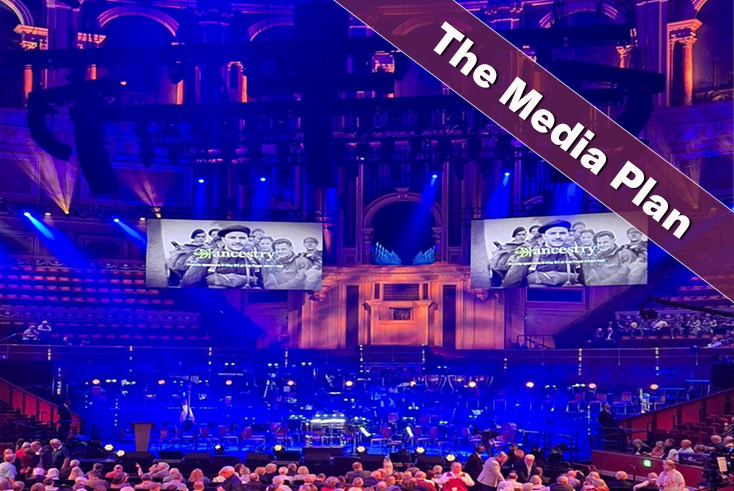How Ancestry’s D-Day 80th-anniversary campaign broke records

The Media Plan
D-Day’s 80th anniversary in June was a historic, solemn and celebratory day, with strong emotional resonance around the UK and the world.
For genealogy website Ancestry, it was also an event to capitalise on to drive user engagement at a time when Brits were contemplating the heroic actions of previous generations.
“Military moments are a point of interest when it comes to people looking into their family history,” explained Starcom business director Claire Toland. “And therefore they could resonate highly with Ancestry’s target audience, prompting them to reflect on the role their courageous ancestors played in these moments of historical importance.”
Given it was the 80th year, Starcom knew the D-Day commemoration in 2024 would attract considerable media attention and public interest.
Toland explained: “It presented a huge opportunity for Ancestry because, for a short period of time, heightened interest would likely expand their reach and relevance to a broader audience.”
The brand awareness challenge
The challenge for Ancestry is that it has suffered a “slow yet steady decline in awareness” for the brand, according to Toland. Recruiting more consumers is tantamount to the site’s long-term success.
“Getting registrations with new audiences was the ultimate challenge for Ancestry for D-Day and is still a core focus for 2024”, she continued.
While Starcom was aware D-Day would likely lead to a surge of category interest for the 55-plus audience, to engage a wider number of people the agency needed to “think differently”.
Focus group research found that younger consumers often avoid content that features war and lack the same sense of national pride as older generations, but they do lean in to storytelling around courage and bravery, especially if it comes from trusted sources.
Starcom identified Ancestry’s growth audience as “connecting discoverers” — 30- to 54-year-olds experiencing mid-life changes, such as having a family, developing careers and looking after ageing parents.
While this segment was already highly aware of Ancestry, Starcom knew potential consumers in this age group “require much more education and reassurance to consider signing up”. So the agency looked to build a mid-funnel media plan focusing on channels “that offer in-depth engagement and trust”, according to Toland.
Starcom utilised a proprietary tool to identify the most influential touchpoints for this audience segment along multiple stages of the consumer decision journey, leading to more investment in influencer marketing and video channels than ever before, as well as moving into new spaces such as digital audio and podcasts.
Varied approach
Starcom’s media approach sought to focus on “moments of storytelling” and “surrounding contextually relevant content across all touchpoints”. So it ultimately settled on a campaign with varied elements.
These included buying host-read spots on UK-based history podcasts, a targeted approach to programming on linear TV and broadcaster VOD, sponsorship of ITV’s D-Day Royal Albert Hall broadcast, a partnership with Reach to sponsor the Mirror‘s standalone D-Day supplement and run ads on its website, as well as an influencer campaign featuring military veterans and historians.
“All of this was underpinned by a hardworking performance media plan across display, search and social to ensure we were able to capitalise on the interest generated and take audiences through to register on the Ancestry site,” Toland added.
She is particularly proud of Ancestry’s involvement in the Royal Albert Hall broadcast — a “music-led storytelling extravaganza honouring the beginning of the end of World War II”. Toland added: “From the first note of the national anthem by the Royal Philharmonic Orchestra, it was clear that this powerful, multi-sensory event was like no other.”
Ancestry’s involvement included having a presence in the event programme, with genealogist Simon Pierce sharing the story of Private Emile Cortiel, who was killed during the D-Day landings and was buried alongside his “para-dog”.
‘A celebration of brave stories’
According to Toland, the campaign broke records as Ancestry’s most successful free-access event since 2020. The media strategy also led to an 82% increase in traffic to Ancestry’s website among non-registered visitors.
“More people than ever were interested in discovering more about their family history,” Toland said.
Meanwhile, the ITV-funded programme “exceeded all expectations”, with sponsorship idents reaching more than 2m people across ITV1 and ITVX. The live broadcast of the show also saw a 99% increase in viewers compared with the previous six-week average during the 4pm-5:30pm Sunday time slot, Toland added.
She reflected: “It was a celebration of brave stories that spanned generations.”




